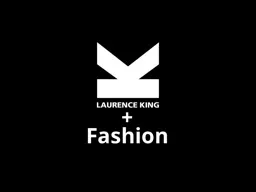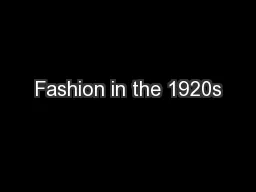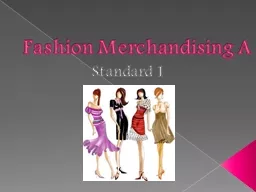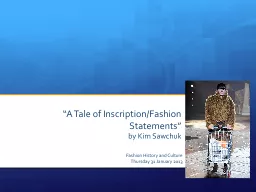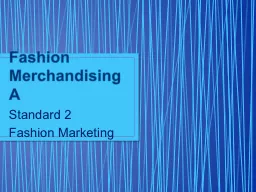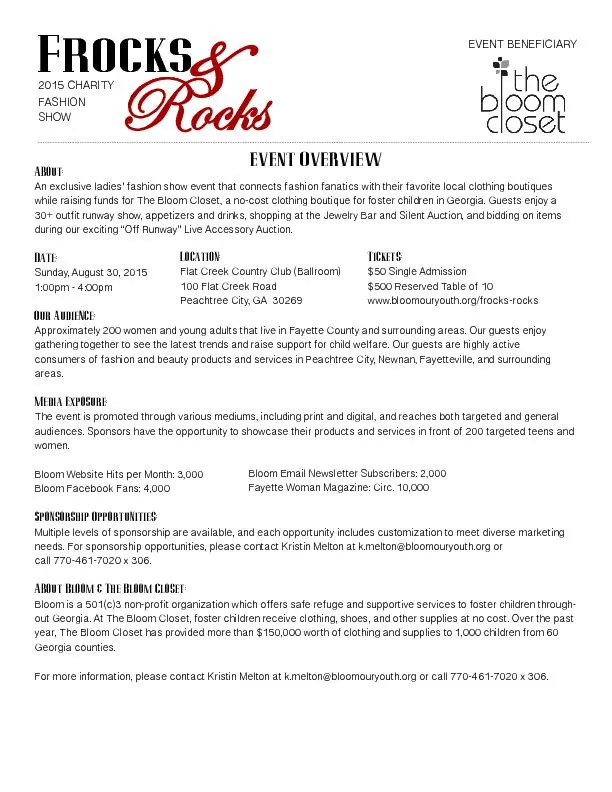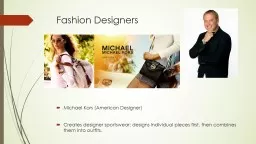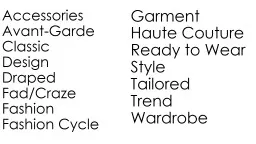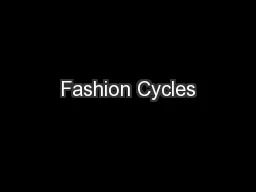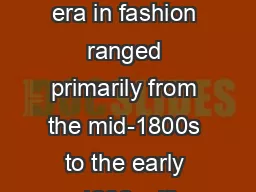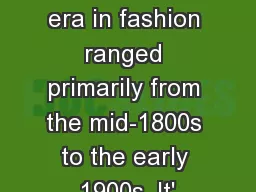PPT-+ Fashion Promoting Fashion
Author : bikersphobia | Published Date : 2020-06-19
Barbara Graham Caline Anouti Chapter 4 Advertising for Fashion Interpret the theory of advertising Attract consumers attention Identify and use different advertising
Presentation Embed Code
Download Presentation
Download Presentation The PPT/PDF document "+ Fashion Promoting Fashion" is the property of its rightful owner. Permission is granted to download and print the materials on this website for personal, non-commercial use only, and to display it on your personal computer provided you do not modify the materials and that you retain all copyright notices contained in the materials. By downloading content from our website, you accept the terms of this agreement.
+ Fashion Promoting Fashion: Transcript
Download Rules Of Document
"+ Fashion Promoting Fashion"The content belongs to its owner. You may download and print it for personal use, without modification, and keep all copyright notices. By downloading, you agree to these terms.
Related Documents

